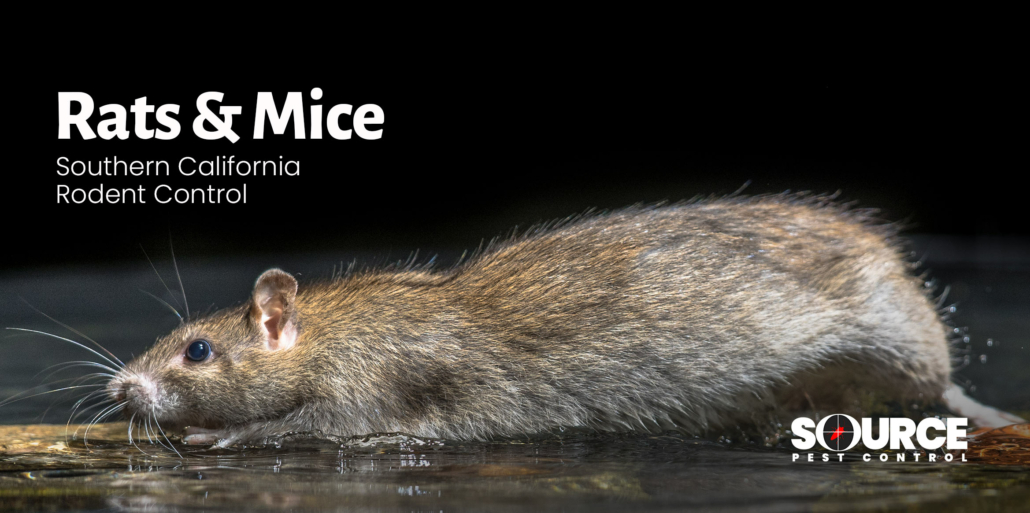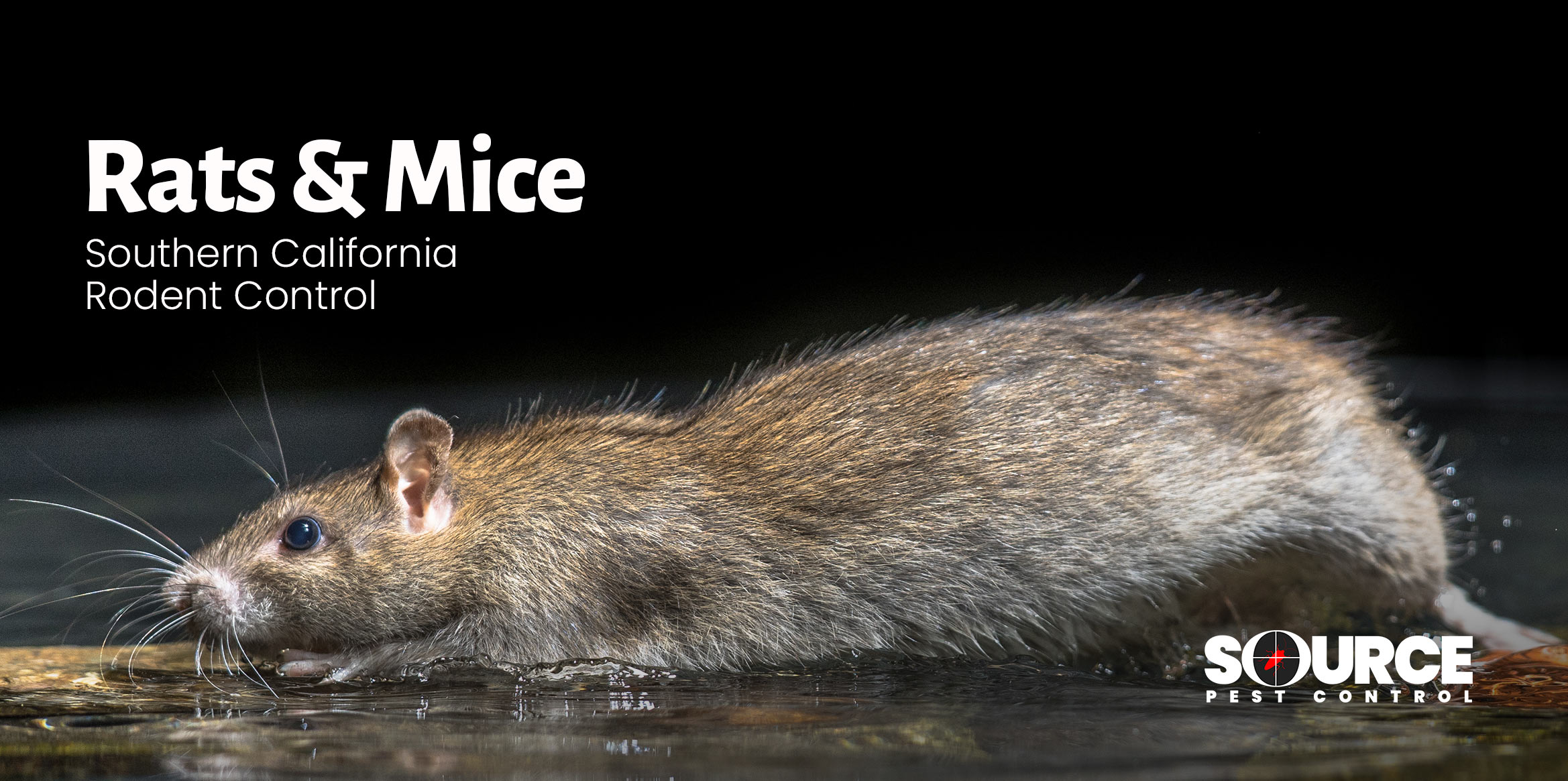Rats & Mice: Southern California Rodents
Let’s face it; rats and mice can be downright frightening! There’s a big difference between that cute little hamster or gerbil you had as a pet in your childhood days, and a huge Norway Rat racing across the floor of your garage. Not only do wild rats and mice carry and transmit dangerous diseases, they also bring fleas, ticks, and other parasites that can wreak havoc on your family and pets. Rodents can multiply rapidly, which can turn into an infestation as fast as Bob Ross can paint a happy tree. Beyond their disease-carrying potential, they love to destroy the electrical wiring in homes, and climb into the engine compartment of cars and cause many problems.
Preventative rodent control is the best rodent control.
We’re going to touch on some basics of rodent control in this brief article. We’re also going to share some tips on how to prevent rats and mice from entering your home. Preventative rodent control is the best rodent control. It’s easier to prevent a rodent problem than it is to eliminate one. Let’s get started.
Common Southern California Rodents
Let’s talk about the kinds of rodents that commonly invade Southern California homes and businesses.
• The Norway Rat
• The Roof Rat
• The House Mouse
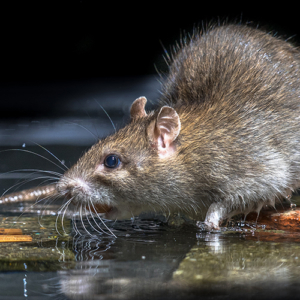 Norway Rats
Norway Rats
Contrary to popular belief, the Norway Rat is not Norwegian. It can be found throughout all US states, and this includes Southern California! Other aliases include the grey rat, water rat, sewer rat, and brown rat. They’re often a little overweight, have small eyes and ears, and a scaly tail that’s slightly shorter than their body.
The Norway Rat’s fur is coarse and often dark grey or brown in color.
Prevention Tips: Avoid attracting Norway Rats by removing piles of garbage, firewood stacks, dense shrubbery, and debris. Norway Rats also drink large amounts of water, so be sure to repair any leaking faucets and irrigation lines. Last, don’t leave water bowls for pets or other standing water anywhere outside of the home.
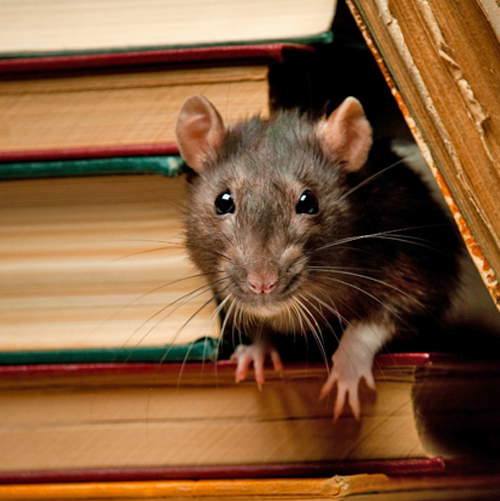 Roof Rats
Roof Rats
The Roof Rat, also known as the Black Rat or House Rat, can be found all across Southern California. Once these pesky little guys nest in your home, they quickly become a big problem.
Roof Rats are often either black or light brown and have a lighter underside.
Prevention Tips: Avoid attracting Roof Rats by removing piles of garbage and woodpiles from around the home. Attics, chimneys, sewers, and other water sources or food will without a doubt attract these guys.
If you think you have a Roof Rat problem, you may find some success by placing rat traps around the home, but this is more of a short-term fix. Where there is one, there is often more close by. The best option is to call a professional.
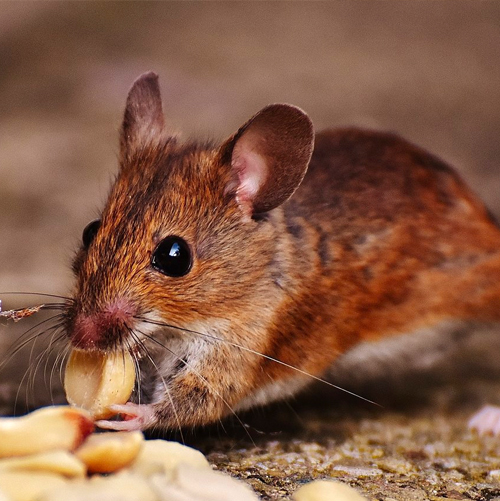 House Mouse
House Mouse
The House Mouse is one of the most abundant specials of rodent. They have a pointed snout, larger ears, and a long, hairy tail.
House Mice are most active in the spring and summer months, and retreat into residential homes and business buildings in fall and winter. They typically feed on unattended food and garden produce, and can even spread disease and other pests such as ticks and fleas. Mice like to mark wooden furniture, gnaw electrical wires, and defecate everywhere!
Prevention Tips: To help prevent House Mouse infestations, seal cracks and holes on the outside of your home, dispose of any garbage or wood piles, keep attics well ventilated and dry, repair leaking pipes, and keep grass and shrubbery around the home trimmed short.
Conclusion
Rats and mice are one of the most common pests in Southern California, and once they decide to set up camp, they’re very difficult to get rid of. You may have some success taking them on yourself with traps, but they have a tendency to keep showing up. If you find this being the case, please reach out to us and we’ll be happy to help.
Schedule a free consultation (or appointment) today.
See what our clients are saying: 4.8 ★★★★★ 188 Google Reviews
Have additional questions? Feel free to contact us.

